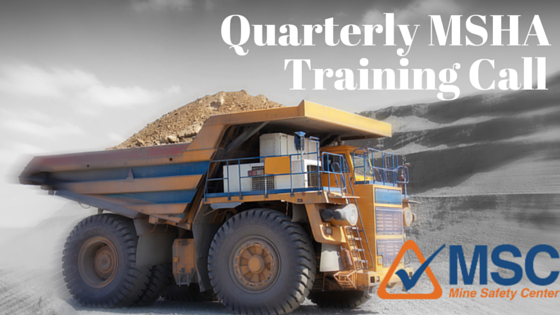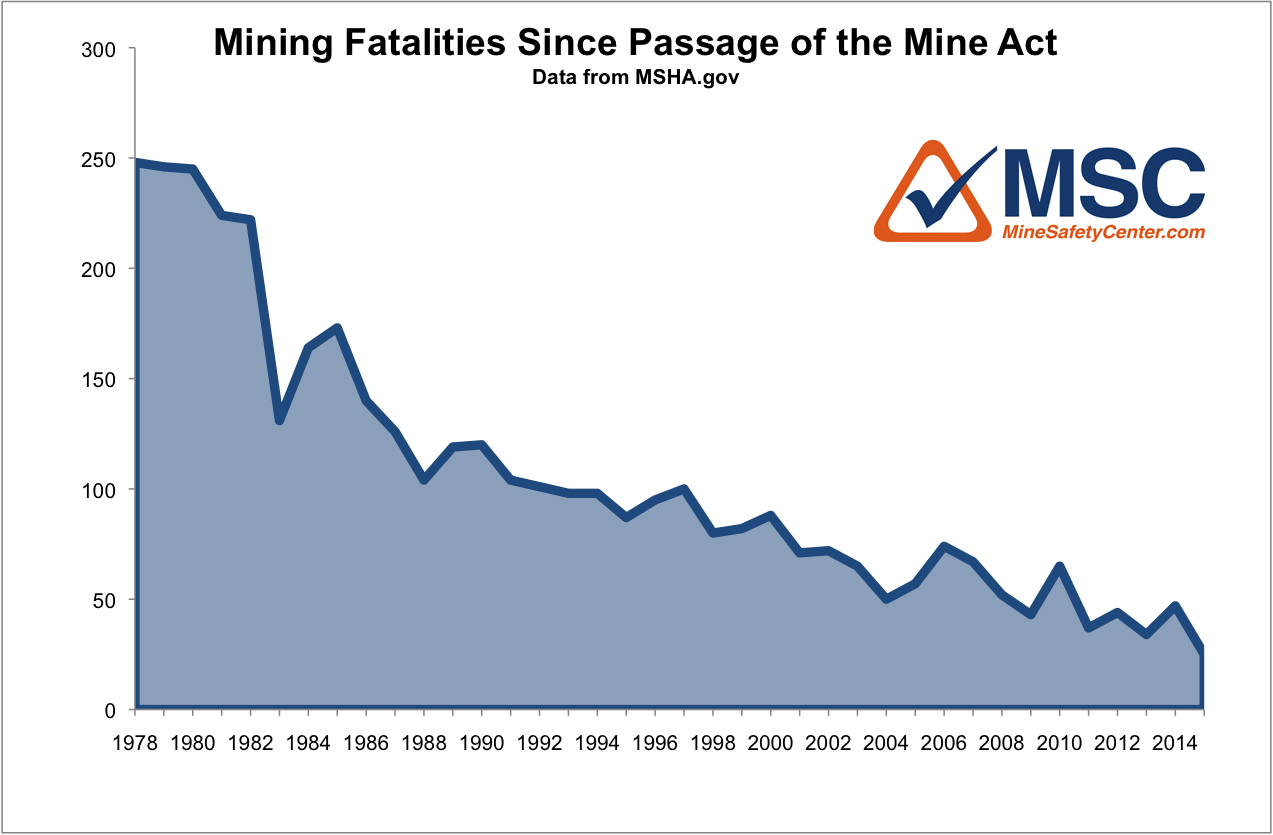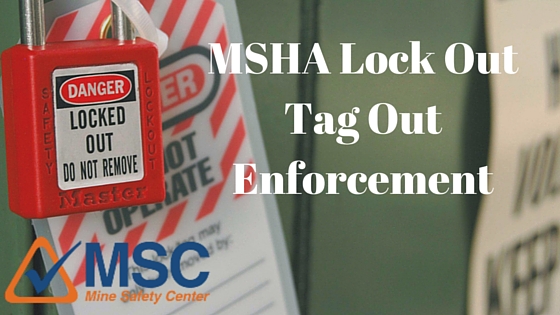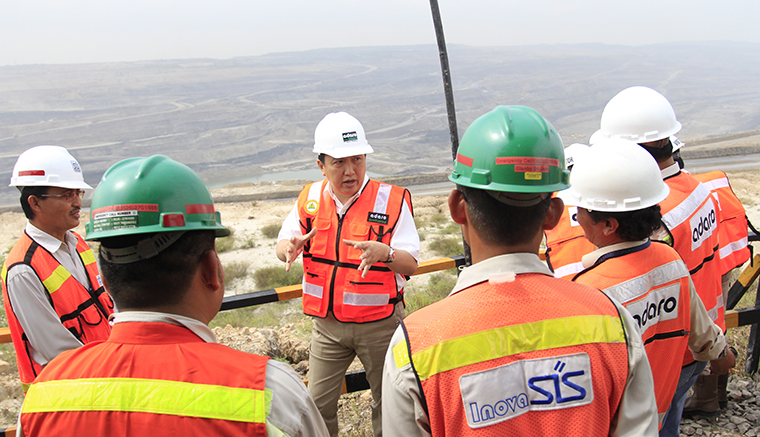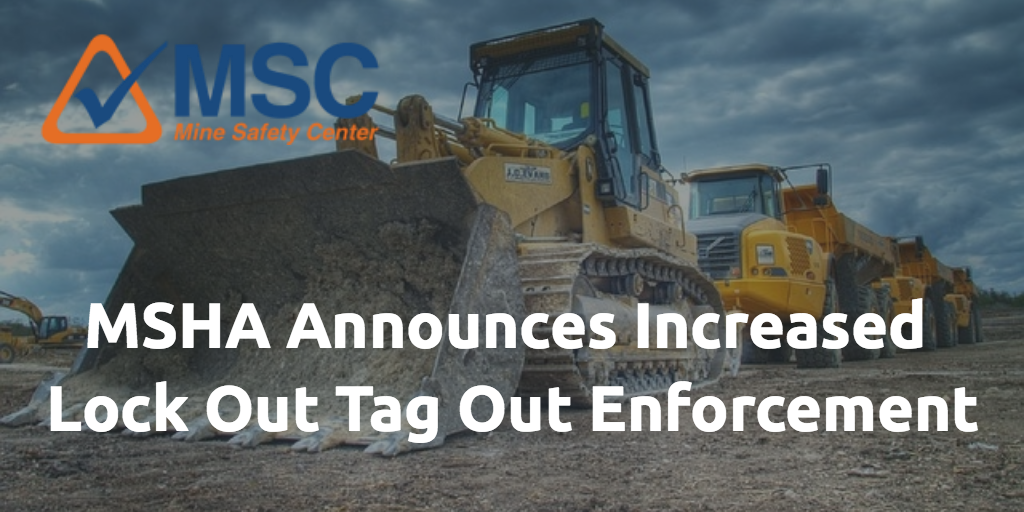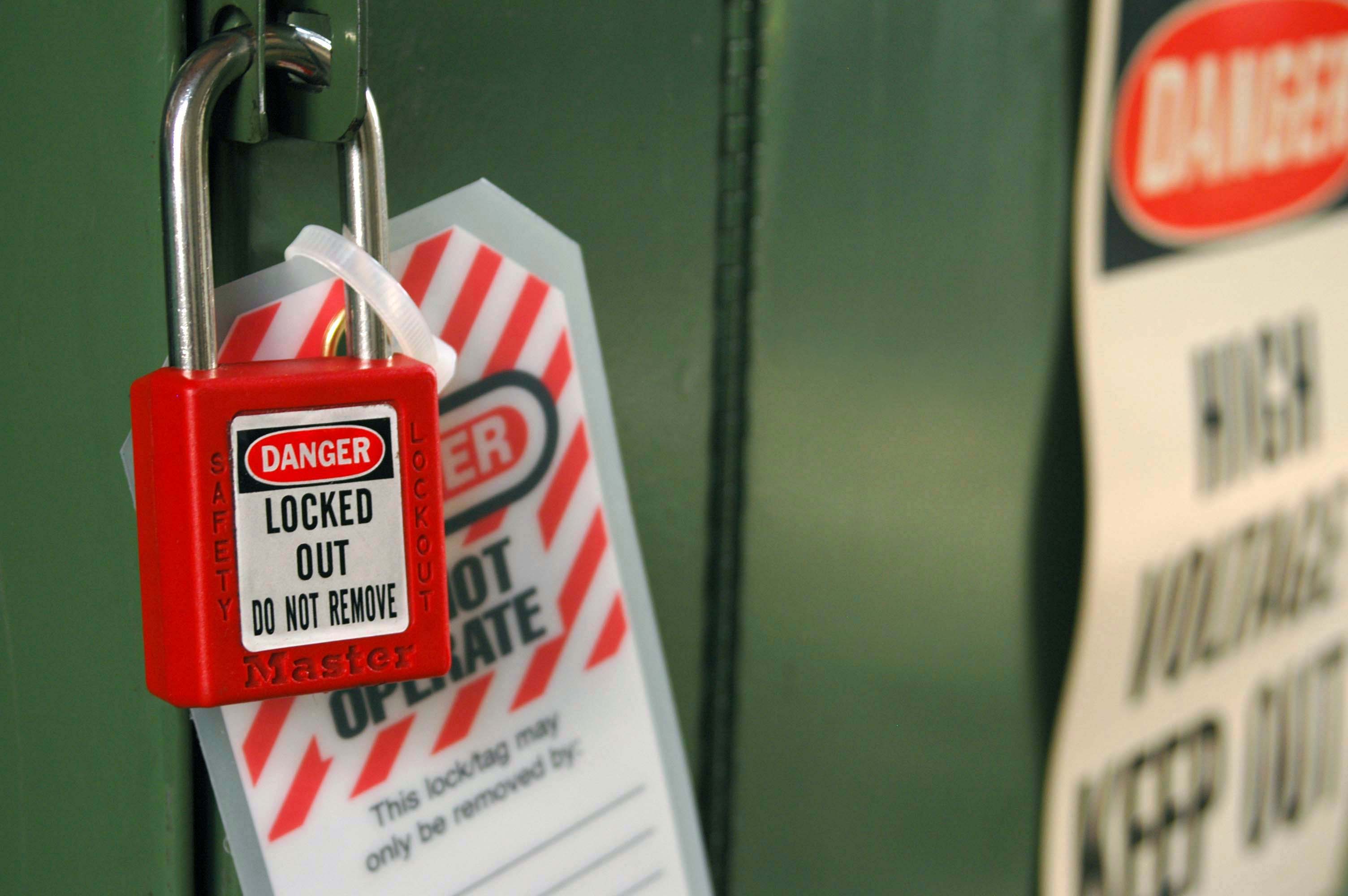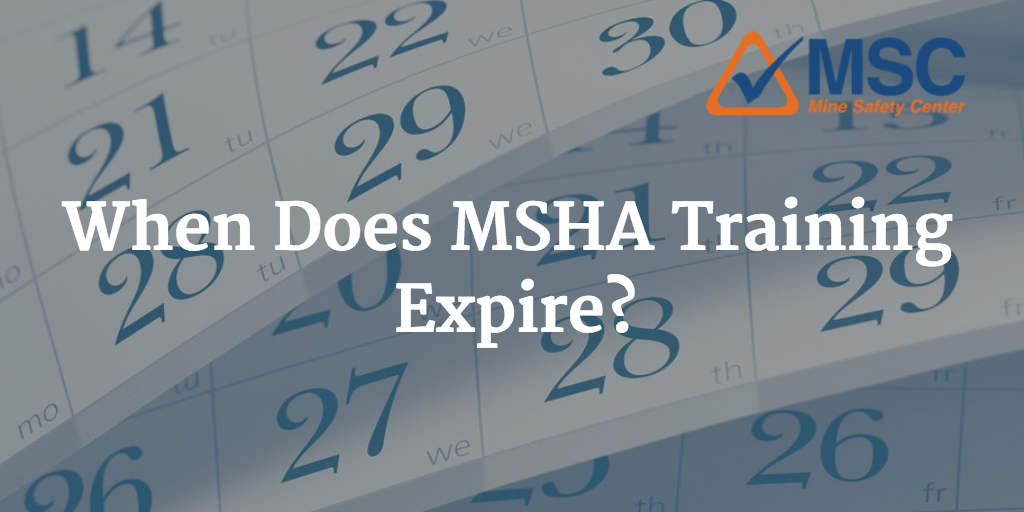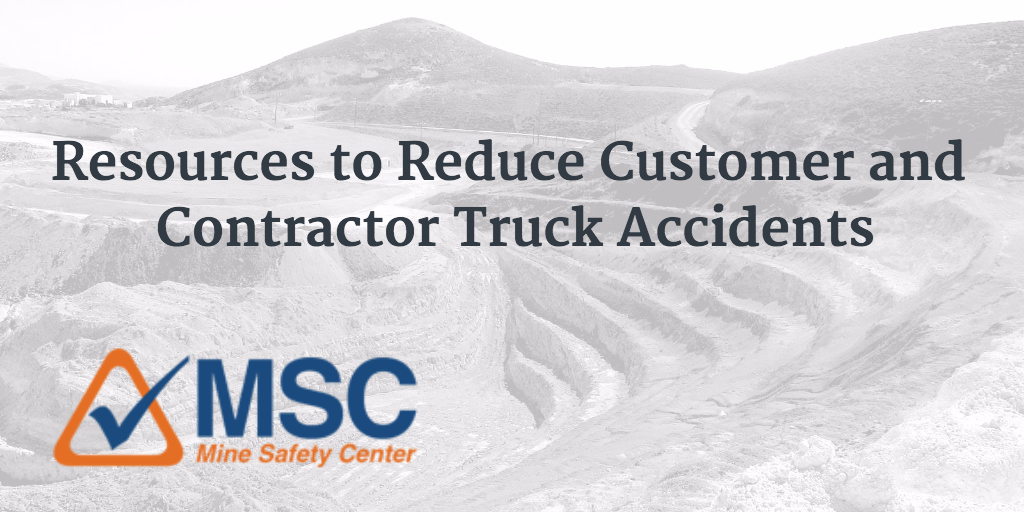Notes on the Q1 Quarterly MSHA Training Call
The Q1 Quarterly MSHA training call was held on April 27th, 2016 and contained quite a few bits of new information. Assistant Secretary of Labor for Mine Safety and Health, Joe Mains opened with an overview of 2015 and looking forward at 2016. Mr. Mains commented that the safest year ever in the U.S. for mine safety and health. He specifically pointed to the drop in silica and respirable dust levels every year since the black lung initiative began.
Mr. Mains also touted the new pattern of violations rules as a success. When MSHA established the new POV rules in 2010 there were 51 mines that were subject to POV status. In 2016 there was only 1 which didn’t even fully meet the criteria. (I would argue at least some of that drop was companies adjusting to the new rules, but I’ll get into my thoughts in a bit.)
MSHA Looking To Learn from 2015 Tactics
MSHA has “taken an aggressive all hands on deck approach” since August 3rd, 2015 when three miners tragically lost their lives in separate incidents, a first since 2002. Jeff Duncan, MSHA’s Director of Educational Policy and Development, went so far as to call it “aggressive actions on steroids” but was quick to point out the cooperation from industry associations and companies (More on that later).
MSHA officials declared that last year is the template and road map for the future. Coal will now take up best practices discovered on M/NM side. What might that look like?
MSHA Initiatives and Enforcement in 2016
During the call there were repeated statements that MSHA will continue and potentially increase their heightened presence at sites across the country. That includes “more boots on the ground and more focus on enforcement.” We will also see the increase in impact inspections continue.
MSHA indicated they plan to:
- Put more focus on outreach which officials say keeps safety awareness higher.
- Continue talking with industry, and encouraging industry officials focus on learning the lessons from recent serious injuries and fatalities. Especially focusing on an increased use of best practices in pre-op exams.”
- Release Safety Alerts monthly to “keep industry the focused on safety.”
- Conduct more walk and talks on coal side.
- Encourage companies to “look hard at conditions that have cost miner’s lives.” pre-shift examinations. Curb injuries with walk and talks.
Quarterly MSHA Training Call Signals Continued Enforcement
Over the past year MSHA has consistently extended an olive branch to industry associations and leaders. They are involving the mining industry in their safety initiatives through partnerships and meetings, more than ever before. That may be the carrot in MSHA’s carrot and stick approach.
But MSHA officials are also on site more than before. More walk and talks, inspections and meetings.
MSHA sounds convinced their increased involvement has been the crucial factor in improving mine safety. Maybe they’re right when you take the long view. Fatalities and injuries have trended steadily down since the Mine act was passed in 1977.
But they only have 6 months of data to back up their conclusions on these latest, drastic initiatives. It remains to be seen whether it’s a wise choice to base what sounds like an overhaul of the administration’s operating procedures with so little data.
I’m rooting for better industry and MSHA cooperation. The goal of both groups is a safe and productive work force. I’m still leery of Joe Mains’ history of overzealous citations and fines.
What does this mean for you? Get ready to see a lot of your friendly, neighborhood MSHA inspector and other officials this year. Focus on the safety basics and you should be fine.
Let’s just hope MSHA doesn’t turn it’s olive branch into a club over the next few months.
Sign up to get MSHA updates and tips like this sent right to your inbox. Don’t get blindsided by MSHA, stay informed.
You can find the quarterly MSHA training call notes on MSHA.gov. The call’s audio recording will be released later.

MSHA Part 46 Online Training Saved This Busy Contractor’s Time
Bill McCasey of Swan Electric, Inc. needed MSHA Part 46 Online Training as soon as possible for a job. But they needed a flexible training schedule to avoid shutting down their main business. Swan’s manager decided that online training was the fastest, most affordable way to fulfill their training obligations.
Swan needed their MSHA Part 46 online training company to meet 5 requirements:
- 24/7 access to training that could be done on their schedule
- Assistance with MSHA’s complex paperwork
- Trustworthy, high quality training
- Management tools to ensure all their employees finished the training on time
- The best value for their money
After thoroughly researching their options, Swan decided the Mine Safety Center’s online Part 46 training met all their needs. Why?
Training was available 24/7 to all Swan Electric employees, anywhere with an Internet connection. They could sign up a new employee in less than 5 minutes and start their training any time. Their employees could even stop and start modules as needed. Through MSC’s management reporting tools Bill was also able to remotely track his employee’s progress to make sure they completed the training on time.
Bill and his employees also took advantage of MSC’s Free Automated MSHA Training Certificates. When each employee finished their course, the system automatically completed nearly all of the necessary paperwork and provides employers with electronic training records. This dramatically reduces the opportunity for human error and the MSHA fines that can result.
Bill knew the training covered all the necessary topics to safely be in site and meet requirements because the training was designed by Kim Redding, a former MSHA inspector and top mine safety consultant.
Swan Electric was able to fulfill all of MSHA’s part 46 training requirements quickly with zero downtime and correct paperwork.
MSHA Lock Out Tag Out Enforcement Update
More information has come out since last week’s MSHA Lock Out Tag Out emphasis announcement.
MSHA inspectors will focus heavily on locking out energy sources before performing any maintenance or repairs. In particular, MSHA singled out 1 mechanical lock out standard and three electrical lock out standards that will be emphasized:
Mechanical Lock Out
- 30 CFR §56/57.14105 – Procedures during repairs or maintenance
Electrical Lock Out
- 30 CFR §56/57.12006 – Distribution boxes
- 30 CFR §56/57.12016 – Work on electrically powered equipment
- 30 CFR §56/57.12017 – Work on power circuits
MSHA Lock Out Tag Out Inspections
There is only one way MSHA inspectors can check if a company is using proper lock out tag out procedures. When the MSHA inspector shows up (unannounced as always) he will go directly to the motor control center. If any maintenance is in progress he’ll be checking for:
- All energy sources isolated and locked out
- An individual lock for each person performing the maintenance
- A lock for which only one person has the key
- A tag with each person’s name and the date on each lock or
- One tag with the name of every person performing maintenance and the date
Isolating and locking out all energy sources seems to be the largest point of emphasis. In addition to what you’re working on, you must lock out any parts or machines or material that could potentially injure. For example, if you’re working on a cone crusher you must lock out the crusher itself. But you also need to lock out the belts going to and from the crusher. There’s a very good example of this in MSC’s Rules To Live By section which is available in our free trial.
Lock Out, Tag Out, Try Out – Every Time
In a great post, ISHN magazine outlined the most common problems with Lock Out Tag Out. Even after 16 years it’s spot on. I would only add one point. While “trying out” isn’t required by law, it is a best practice. You can’t truly know something is locked out until you’ve tried to turn it on and nothing happens. As MSHA pointed out in their announcement, “it’s not locked out until you’ve tried it out.”
Why do we try out? Our expert Kim Redding was recently consulting at a Cement plant where they needed to replace a belt. Every energy source to the conveyor was identified and locked out; not an easy task when there are over 5,000 breakers in one breaker box. The employees followed every regulation and protocol to the letter. But what happened when they tested their lock out? The belt turned on. Someone had mislabeled breaker, a mistake that seems small until someone’s life is on the line. We all know what could have happened if those workers hadn’t tested their lock out.
Including where you’re working, either the location or equipment, on tags is another best practice. You’re not required by law to include this information, but it’s a very good idea. It only takes a few extra seconds and could prevent a serious accident.
MSHA lock out tag out enforcement will increase in the coming months. Are you ready? To prepare, you can take our free Lock Out Tag Out module.
Lock Out Tag Out Procedures Will See Heightened Emphasis from MSHA in 2016
Lock Out Tag Out procedures have been an essential part of mine safety for years. This morning, Neal Merrifield of MSHA took the opportunity to reiterate “how important it is to develop and implement an effective mine-specific Lock – Tag – Try program.”
He goes on to say, “since 2005, 28 metal and nonmetal miners have died in accidents in which electrical power was not disconnected and locked out or other energy sources were not controlled before work was begun on power circuits or mechanical equipment.”
“MSHA standards require that before working on electrical circuits, power must be disconnected, switches locked out and warning notices posted and signed by those performing the work. In addition, power to machinery or equipment must be off and the machinery or equipment blocked against hazardous motion before beginning repairs or maintenance.”
Expect Increased Lock Out Tag Out Try Out Enforcement
“MSHA will stress the importance of concentrating on effective lockout procedures by focusing additional resources on increased enforcement and education and outreach, including walk-and-talks….Metal and Nonmetal inspectors and Educational Field and Small Mines Services personnel will be visiting mines, discussing safe work practices with miners and reminding everyone to maintain their focus on safety.”
Lock Out Tag Out Procedures Must be in Your Standard Operating Procedures.
Lock Out Tag Out Procedures should really be known as Lock Out Tag Out Try Out. No machine is truly tagged out until you have tried to turn it on and nothing happens. MSHA is re-emphasizing their effort to make sure every person on a mine tries out a machine before they consider it safe to conduct work. Lock Out Tag Out Try Out should be an integral part of every company’s standard operating procedures.
What This Means For 2016
As we all know, MSHA is much more inclined to increase enforcement and fines than to educate. I’ve discussed MSHA’s inclination to attribute decreased fatalities with the recent increase in fines.
Review your Lock Out Tag Out Try Out procedures. Do they need updating? Now would be a great time to focus a morning safety meeting or toolbox talk on LOTOTO.
Make sure you emphasize Lock Out Tag Out Try Out in your MSHA training this year.
Stay safe everyone.
Does MSHA Training Expire? Yes, But…
“Does MSHA training expire?” It’s one of our most asked questions. The short answer is yes. But as with most government rules there are exceptions and nuances. To remain compliant you must take Annual Refresher training every year.
The rules differ on how long you can go without taking Annual Refresher without starting from scratch. Depending on what the mine operation is pulling out of the ground you either need Part 46 or Part 48 training. Need a refresher on 46 vs. 48? You can learn the difference between Part 46 vs. Part 48 here.
MSHA Part 46 Training
Part 46 certification must be renewed every year with an 8 hour Annual Refresher training. There is a small amount of wiggle room. The training does not expire after exactly 365 days. You are compliant until the end of the calendar month one year after your last Annual Refresher training.
Need to read that again? Welcome to MSHA regulations. Let’s try that in plain English. If you finished your MSHA training (training complete, with the certificate signed and dated) on January 3rd you have until the following January 31st to finish your next Annual Refresher training. Or you could make your life easier and use Mine Safety Center’s online MSHA training. Our system will send you an email 60 and 30 days before your MSHA training is due.
Want more MSHA compliance tips from a former MSHA inspector? Download our Free Contractor Success Ebook. You’ll get the info and forms you need to get up to speed.
Does MSHA training expire completely if you don’t finish within the 1-year window?
No. You are no longer certified to go on a mine after 1 year-(ish) and you will need Refresher training if you plan on working on a mine during that year. But Part 46 training doesn’t fully expire until 2 years after your last MSHA training. At this point, you don’t need to start New Miner training from scratch.
This can be useful for contractors. If you don’t have a mine contract one year you do not need to spend the time or money to take MSHA training. But you will need to make a choice at the end of the second year. If you or your employees don’t take a Refresher Training within 2 years you will need to re-take your 24 hour New Miner training and re-complete your New Miner Training certificates.
Part 48 MSHA Training
All of the above rules stay the same if you are working on a Part 48 surface mine.
But underground Part 48 mines have different regulations.
30 CFR Part 48 states that an individual who receives 40 hours of training and works for 12 months as an underground miner is considered an “experienced miner.” MSHA rules require any experienced underground miner who has been away from mining for more than five years receive 8 hours of “experienced miner” training before returning to the mine.
You will need to re-take 40 hours of “new miner” training from a blue card certified trainer if you do not have the 12 months of mining experience. Some States have additional training requirements for miners. Contact the appropriate agency in your state to learn if this applies to you.
So, does MSHA training expire? Yes, but the rules change depending on your specific situation.
One Last Thing
It’s essential to accurately complete your certificates and hold on to your training records, especially your New Miner certificate. There have been instances where contractors lost their New Miner certificate and were forced to completely retake their 24 hour training. For MSHA the proof is always in the paperwork. You can ensure your paperwork and company are MSHA compliant by downloading the Contractor Success Kit. This free Ebook walks you through the MSHA compliance step-by-step to make sure you’re protected.
Need more MSHA compliance info? Download our free Contractor Success Ebook.
MSHA Confined Space Enforcement To Increase Dramatically
I just received an alert on MSHA confined space enforcement that needed to be passed along. Due to recent serious injuries and fatalities MSHA will be “placing special emphasis on enforcing its standards related to entering bins, hoppers, silos, tanks, and surge piles… by focusing additional resources on increased enforcement attention, education and outreach, including walk-and-talks,” said Neal Merrifield.
This MSHA confined space enforcement emphasis is just the latest in a long line of MSHA attempts to increase mine safety through fines and enforcement. The mining community needs to prepare for the imminent increase in MSHA enforcement. To help mines and mine contractors get ready and keep workers safe we’re offering our full Intro to MSHA Confined Space training for free.
The following is the full letter regarding the MSHA Confined Space Entry Alert from MSHA M/NM Administrator Neal Merrifield. All emphasis is added.
Unsafe work in confined spaces has led to miner deaths and injuries in the metal and
nonmetal mining industry. Recent tragic incidents include: a fatality while cleaning the
inside of a tanker railcar and a miner being severely burned during maintenance inside
a baghouse screw conveyor hopper. To address these regrettable occurrences and
help prevent similar instances in the future, MSHA will be placing special emphasis on
enforcing its standards related to entering bins, hoppers, silos, tanks, and surge piles.
MSHA and the Industrial Minerals Association-North America (IMA-NA) have engaged
the issue of confined spaces as a project within the Alliance between the two
organizations. We recommend conducting a hazard assessment and implementing a
permitting system as part of a safe entry standard operating procedure (SOP).
Many mining and milling workplaces contain areas that are considered “confined
spaces” because, while they are not necessarily designed for people, they are large
enough for workers to enter and perform certain jobs. A confined space also has limited
or restricted means for entry or exit and is not designed for continuous occupancy.
Confined spaces include, but are not limited to, tanks, vessels, silos, storage bins,
hoppers, vaults, pits, manholes, tunnels, equipment housings, ductwork, pipelines, etc.
Metal and Nonmetal (MNM) regulations related to confined space that MSHA enforces
include: 30 CFR §§56/57.5001(a); 30 CFR §§56/57.5002; 30 CFR §§56/57.5005(c);
30 CFR §57.5015; 30 CFR §§56/57.14105; 30 CFR §§56/57.15005; and
30 CFR §§56/57.16002.
These standards regulate hazardous atmospheres; material that has the potential to
engulf an entrant; walls that converge inward or floors that slope downward and taper
into a smaller area which could trap or asphyxiate an entrant; and any other recognized
safety or health hazard, such as unguarded machinery, exposed live electrical wires, or
high heat.
Because confined spaces are potentially dangerous, employers should evaluate all
confined spaces in which their employees work to determine whether hazards exist or
whether the work to be done in the space can create hazards. MSHA will place special
emphasis on confined spaces over the next several months by focusing additional
resources on increased enforcement attention, education and outreach, including walk-
and-talks. We are encouraging the mining industry to do the same. MSHA will provide
the mining industry with additional information on the importance of having an effective
MSHA Confined Space Entry program. Please make sure that information gets distributed.
MNM inspectors, joined by Coal inspectors and Educational Field and Small Mines
Services personnel will be visiting mines, calling attention to these potentially hazardous
conditions and discussing safe work practices with miners. Please join MSHA and
IMA-NA in this special safety outreach and help us spread the word to the miners at
your operations. This is the time to be proactive. Assure that an effective Confined
Space Entry program is implemented, that miners are trained on program specifics and
are task trained to recognize and avoid hazards, so they can go home safe and healthy
at the end of each shift.
A link follows to an MSHA Confined Space Entry Alert recently published on MSHA’s website:
http://www.msha.gov/Alerts/confined-space-entry-ha1109.pdf. Also, for more
information on the confined space mining deaths that have occurred since October 2013 and
Please use the photos and descriptions to prompt discussions about fatalities and how to prevent them.
Mining Truck Accidents Can Be Reduced
Have contractors or customers caused mining truck accidents or a near miss on your site? Are aggregate haulers climbing on their trucks at your mine? Do drivers outside their trucks pose a hazard at your mine? Do you have difficulty managing these outside truckers?
Following established rules and procedures is essential to reduce mining truck accidents and other unsafe incidents. These rules and procedures also apply to customers and contractors but are sometimes forgotten because these drivers are not on a mine as often as mine employees.
The Mine Safety Center has teamed up with CalCIMA to produce free materials to teach a few simple ways to stay safe on a mine. “The training materials include signs that will warn drivers of the most common customer truck hazards at mine sites,” said Mike Herges, safety manager at Graniterock and a co-chair of CalCIMA’s Safety & Health Committee. “We hope mine operators embrace these warning signs and they become the standard at all mines,” added Herges. The training materials include a video, postcard, and brochure that incorporate the warning and caution signs. They provide operators a variety of formats to reach drivers, brokers, and fleet managers.

